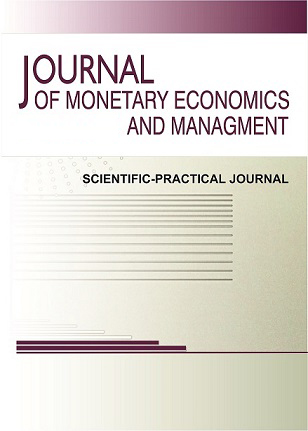Russian Federation
student
The article examines the features of business continuity management (BCM) in public sector organizations amid modern challenges and crises. The authors analyze the key principles of BCM based on ISO 22301 and ISO 22313 standards and identify the specifics of their application in government institutions. The study outlines the main stages of BCM implementation, including risk assessment, recovery strategy development, and plan testing. Special attention is paid to the differences between the public and private sectors, such as the priority of public welfare, strict budget constraints, and the mandatory nature of services provided. The authors highlight factors complicating BCM adoption in the public sector, including insufficient staff awareness, limited funding, and difficulties in integration with existing processes. The article also emphasizes the importance of adaptability and organizational resilience in addressing unforeseen crises. Recommendations are provided to improve coordination between public and private organizations and to foster a risk management culture.
business continuity management, public sector, ISO 22301, organizational resilience, crisis management, adaptive strategies
1. Hassel, Henrik & Cedergren, Alexander. (2024). A framework for business continuity management in a multiactor context. Journal of Contingencies and Crisis Management. 32.https://doi.org/10.1111/1468-5973.12573.
2. ISO. 2019. ISO 22301:2019 – Security and Resilience – Business Continuity Management Systems – Requirements
3. ISO 22313. 2020. Security and Resilience — Business Continuity Management Systems — Guidance on the Use of ISO 22301.
4. Gibb, F., and S. Buchanan. 2006. “A Framework for Business Continuity Management.” International Journal of Information Management 26: 128–141.
5. Coppola, D. P. 2011. Introduction to International Disaster Management. 2nd ed. Butterworth-Heinemann.
6. Awang Ali, Q. S., M. H. Hanafiah, and S. H. Mogindol. 2023. “Systematic Literature Review of Business Continuity Management (BCM) Practices: Integrating Organisational Resilience and Performance in Small and Medium Enterprises (SMEs) BCM Framework.” International Journal of Disaster Risk Reduction 99: 104135.
7. Alam, E., K. Al Abdouli, A. H. Khamis, H. U. Bhuiyan, and K. A. Rahman. 2021. “Public Trust in COVID-19 Prevention and Responses Between January and May 2020 in Bangladesh.” Risk Management and Healthcare Policy 14: 4425–4437.
8. Bawole, J. N., and Z. Langnel. 2023. “Administrative Reforms in the Ghanaian Public Services for Government Business Continuity During the COVID-19 Crisis.” Public Organization Review 23, no. 1: 181–196.
9. Yun, E., J.-W. Han, J. O. Kim, et al. 2024. “Analyzing Korean Public Health Centers' Infectious Disease Disaster Response Experiences With a Focus on Business Continuity.” Risk Management and Healthcare Policy 17: 789–801.
10. Tómasson, B. 2023. “Using Business Continuity Methodology for Improving National Disaster Risk Management.” Journal of Contingencies and Crisis Management 31: 134–148.
11. Hassel, H., and A. Cedergren. 2021. “Integrating Risk Assessment and Business Impact Assessment in the Public Crisis Management Sector.” International Journal of Disaster Risk Reduction 56: 102136.
12. Hassel, H., and A. Cedergren. 2023. “ Enabling and Impeding Factors for Organizational Adaptive Capacity – A Review of the Literature.” In Proceedings of the 32nd European Safety and Reliability Conference, edited by M. C. Leva, E. Patelli, L. Podofillini and S. Wilson, Research Publishing.
13. Hatton, T., and C. Brown. 2021. “Building Adaptive Business Continuity Plans: Practical Tips on How to Inject Adaptiveness Into Continuity Planning Processes.” Journal of Business Continuity & Emergency Planning 15, no. 1: 44–52.
14. Woods, D. D. 2024. “Resolving the Command–Adapt Paradox: Guided Adaptability to Cope With Complexity.” In Compliance and Initiative in the Production of Safety: A Systems Perspective on Managing Tensions & Building Complementarity, edited by J.-C. Le Coze and B. Journé, 73–87. Springer Briefs in Safety Management.









